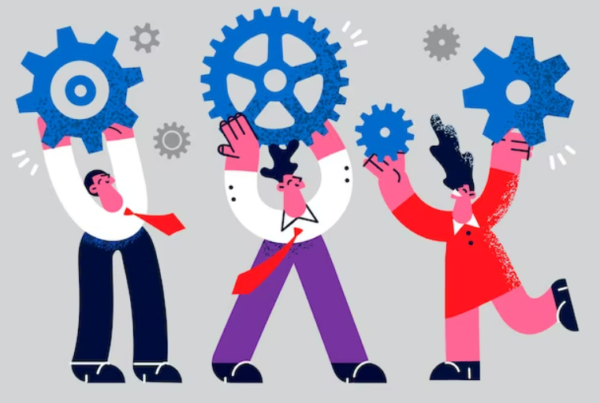We’ll go over all there is to know about team building in this comprehensive guide, including theories, concepts, tactics, and practical guidance.
Teams are the foundation of every enterprise. The more healthy your teams are, the more healthy your business will be. Simply put!
The ‘T’ word—team, teamwork, and team building—dominates the business world of the twenty-first century.
How can teams be improved?
You may make them into an effective team by investing in team-building exercises, activities, and strategies.
We wrote this team building guide to give you the information you need to form productive teams.
What Is Team Building?
Regardless of your line of work, people make up an organization. And to carry out particular jobs, these individuals group themselves into small teams.
In the simplest words, a team is a collection of individuals working together toward a similar goal.
The process of “team building” entails the strategies and steps you or your company employ to transform a collection of individuals into a cohesive one.
A team that functions effectively and achieves success. They are aware of their objectives and the best way to achieve them—by working together.
The term “team building” is used to refer to a variety of exercises meant to improve interpersonal relationships and clarify roles within teams, frequently involving cooperative work.
We’ll explore the value of team building in more detail in the section after this.
The Value of Team Building
It takes time to establish a team, so don’t expect results right away. After a team-building activity, your team won’t magically start working smoothly the next day; results take time to manifest.
All of this may cause you to wonder whether team building is truly worth the expense.
The response is a resounding “yes.”
Team building has a moderately good influence on all team outcomes, according to a meta-analysis of academic literature.
A few advantages of team building include the following:
1. It elevates spirits
The morale of your staff is significantly impacted by team building. The daily grind of work can become boring and repetitive. As a result, your team members might have little to no motivation remaining.
So, this may hinder creativity and productivity at work. Putting together team-building exercises is a breath of fresh air and a welcome vacation from work. In a similar vein, it also motivates people to express their creative side.
2. It facilitates teams getting to know one another better
Individually, your team members may excel at their tasks. But, as a team, you must get them to collaborate in order to complete the project or task at hand.
It can be quite beneficial for employees to get to know one another better through team-building exercises. They are able to learn from one another and work more quickly and confidently together.
3. It Strengthens Critical Thinking and Problem-Solving Skills
Team building encourages your employees’ capacity for critical thought. For instance, if you give a challenge and ask your team members to come up with creative solutions, they will need to exercise critical thinking.
In addition, if that activity requires working together with a teammate to accomplish a task, it will help bring out the best in each person.
4. Internal Communication Is Enhanced
A group’s ability to function can be significantly impacted by poor communication. Your project may take much longer to complete if your team members are unable to communicate the difficulties or needs of a task to one another.
Start team-building events once a week to foster effective communication and help your team members comprehend one another.
5. It promotes a sense of security
It is possible for your staff to feel excluded whether they are working remotely or on-site. Nevertheless, when you plan team-building exercises, your employees have a sense of belonging. Remote employees experience a sense of security and belonging inside the company.
Statistics and Trends for Team Building
Are you seeking for the most recent statistics and trends in employee teambuilding?
New collaboration tools and technologies have altered our perspective on employee team creation during the past ten years. What do the figures actually show about team building, though? Below are a few significant figures.
Just 18% of employees receive communication evaluations at their performance reviews, despite the fact that about 75% of employers deem teamwork and collaboration to be “extremely important.”
97% of workers and executives think that a team’s lack of alignment affects how well a task or project turns out.
Working with a fantastic team, according to 37% of employees, is the main factor keeping them there.
During the quarantine, interest in online and virtual team building activities increased by around 2500% globally.
According to a Harvard study, familiarity with your team enhances performance over time.
In the previous 30 days, more than one-quarter of businesses (26%) have increased access to communication technologies for their staff.
43% of employees, according to the Gensler US Workplace Study, prefer environments that encourage collaboration.
Social connection outside of the workplace is responsible for 50% of the improvements in communication patterns within the workplace.
Compared to those who do not have a best friend at work (29%), female employees who have one (63%) are twice as likely to be totally engaged at work.
Strategies for Team Building
What comes to mind when the phrase “team building” is used?
Do you envision dull gatherings and dull “team building” exercises? Or perhaps a mix of training, mentoring, and coaching?
Team development includes deliberate activities like games, events, and off-sites as well as process-driven methods like improving communication practices.
Four methods of team development are listed by organizational psychologist Eduardo Salas in the Handbook of Human Factors and Ergonomics Methods:
Clearly Stated Objectives
Setting clear goals for your team is one of your most critical responsibilities as a leader. Clear goals engage employees and help them understand the big picture of your business objectives since they are applicable to particular roles. They also ensure that each employee’s specific tasks are directly related to the organization’s expansion objectives.
The ability to achieve goals is a crucial component of goals. It is best to establish the correct balance between the two, even though they must be difficult.
A SMART goal framework, which stands for Specific, Measurable, Attainable, Relevant, and Timely, can be quite useful for setting up clear goals and bringing the entire team together.
Duties and responsibilities that are clear
Goals that are not clearly defined can seriously harm a team’s morale and productivity. Teams must be in agreement with each other’s goals.
Do a quick activity to make sure everyone is on the same page and appreciates each other’s contributions.
- Ask each team member to list their duties in accordance with their priorities.
- The following step is to ask them to list the main duties of each team member.
- Go over the notes to see if there are any essential roles and tasks that your team missed.
- To check for any gaps in comprehension, let your team members compare their notes with one another. This can provide insight into how each team member views the roles of the other members.
- Create a RACI chart to assist clarify each team member’s duties and responsibilities in the final step of the exercise so that everyone can better comprehend each other’s contributions.
- Collaborative problem solving.This strategy aims to promote collaborative problem-solving. An intelligent approach would be to begin with modest initiatives and tasks so that everyone may come together to develop a cooperative solution for the issue.
Never forget to give credit where credit is due for strengthening team decision-making. Giving everyone the resources and trust they need to develop solutions both inside and beyond the team is the aim.
Interpersonal connections
Developing strong bonds with team members is the key to successful team development. A skilled manager creates a team based on the core elements of productive teamwork, which include clear communication, support, and mutual trust. Both actively and inactively, team building can strengthen your relationship with your staff.
Although if workplace interpersonal conflict cannot be entirely avoided, a constructive approach can help it be quickly resolved.
Best Approaches for Teambuilding
To foster an atmosphere of trust and respect among team members, you must work very hard. This is a difficult task.
Following are some team-building techniques that you can use if you’re in charge of leading team-building events or a team leader or manager looking for ways to make your teams more enjoyable:
Everyday Routines
Daily team-building activities can be held for almost no money. They may ultimately contribute to the development of a stronger and more motivated team. Here are a few team-building exercises you could try:
The egg drop challenge is a fantastic activity to get your team working together. Provide several groups with packing supplies so they can use them to shield their eggs from a sharp drop. The trick is identifying the winner whose egg holds together and avoids shattering.
Each team member has one minute to present and discuss anything they possess during the show and tell activity. This may be your preferred straws, your tug-of-war prize, or even your passion project! Set two minutes aside after each turn for a team discussion.
Group excursions. For a greater impact, team building exercises can also be conducted outside of the workplace. Look at the suggestions below:
Volunteering is a terrific way to bring teams together, whether it’s for a Christmas charity program or Thanksgiving service to the less fortunate. It promotes unity among team members and helps them give back to the community.
The escape room is among the most enjoyable pastimes. They help people come up with solutions to problems and work together to break out of the locked chamber!
Offsite retreats can be a fantastic method to create a team. While it costs more, it can also give teams that don’t collaborate more time and space to get to know one another.
Team Evaluations
Your team’s level of cohesion? Are there any flaws that you can measure objectively? The purpose of team evaluations is to provide answers to these questions.
The Five Behaviours Model is one framework that can be adopted to help in team evaluation. They support open communication among team members and help individuals recognize their strengths.
Choosing a team
Choosing a team that consists of individuals with similar attributes is a wise strategy. By understanding more about the facets of each person’s personality that may lead to compatibility or conflict, for instance, personality tests can help the group better understand one another.
One of the most popular personality tests, the Myers-Briggs, classifies individuals into 16 different personality types so that they can better understand each other’s traits and areas for improvement.
System for rewarding and recognizing employees
69% of workers claim that if they felt acknowledged, they would work harder. This is why you need to provide an online platform for remote employees to receive appreciation. Organization to organization will differ in how they recognize and respect their personnel, and your particular business requirements will determine how you do it.
Creating Remote Teams
There is no denying that the number of people working remotely is rapidly increasing.
By 2025, remote work will be competitive with traditional office work, according to BlueFace.
The question of how to create a cohesive team when team members aren’t in the same workplace arises as a result of this.
These are some strategies for creating remote teams:
An online ice-breaker is a fantastic method to keep your remote colleagues interested and get to know one another. You might play an ice-breaker game or activity with your team to introduce yourself and start a dialogue. The same icebreakers are used virtually, only over video chats.
To help new hires feel at ease, introduce them to your teammates in a lighthearted manner. You can discover more about the personalities and ideas of your teammates by using virtual icebreakers.
Exercises for Creating a Virtual Team. In-office team building differs greatly from remote team building. You need to develop your company culture differently if your workforce is never present in the same room.
Make it a high priority to schedule enjoyable team-building activities for your remote teams. Games for distant workers will facilitate the development of real human connections.
Teams-building exercises
Continual Check-Ins – Check on everyone’s progress. Plan a team check-in at the beginning of each new week. When the day’s work is done, talk about how life is at home and what keeps everyone occupied.
Invite everyone to join you for a virtual lunch break so you can all enjoy your meals together. It’s a terrific idea to give your coworkers who are experiencing the pandemic alone the impression that they are not alone.
Create a remote communication strategy or policy – remote work policy can be very helpful in developing a remote team. This aids in maintaining alignment among all of your staff.
Keep in mind that your work policy doesn’t have to be dry; it can also contain gatherings for required fun and brainstorming. A work policy aids employees in adhering to the regulations and making them feel more engaged to their jobs.
To offer your team a direction at work, make sure to be explicit about your expectations of each employee and to have a clear purpose.
Meeting in person – Getting the team to gather in person at least once a year is just as crucial as virtual meetings and activities.
Except for company retreats, there aren’t many opportunities for remote workers to interact in person. For teams to better understand their coworkers and how each team member thinks, a retreat is essential.
Keep the lines of communication open – Tools and technology can aid remote workers in overcoming communication challenges. To stay connected, each team member needs to have the tools assigned for a particular communication need. Slack for instant messaging, Zoom for online meetings, and Figma for project collaboration and brainstorming are a few examples.
A Guide to Resources and Tools for Team Building
The tools and training that your employees have access to have an impact on their ability to communicate and work together, in addition to culture and competency.
To successfully differentiate your business, you may need to introduce the appropriate team-building tool.
What characteristics make an excellent team-building tool? It ought to:
- Keep the workforce linked
- Make teambuilding enjoyable and interesting
- Wherever your team is, meet them there
- Share analytics in real time
- Simple to scale
- Establish a favorable environment.
Let’s access a list of resources and suggestions for forming teams:
Tools for Team Collaboration
Teams may communicate, work together, exchange knowledge, and provide transparency with the aid of collaboration tools. Here are some great tools for team communication:
Slack: Slack discussions are more than just talks, making them easier to follow than email exchanges.
MS Teams: In the increasingly congested market for messaging apps, MS Teams offers a distinctive digital platform for team collaboration and management.
Google Chat: Google Chat is a sophisticated and secure team messaging platform. from group conversations to direct messages.
Tools for Project Management
A tool for project management that can help you better manage your team and tasks. The following are the top project management tools:
Trello: It divides up your chores and projects into boards. You can quickly see what’s being worked on, who is working on a particular assignment, and its status.
Teamwork: It enhances collaboration, visibility, accountability, and ultimately results for both internal and external teams.
Wrike: It has tools like Gantt charts, Workload View for managing resources, Custom Dashboards, structure via Folders, Projects, and tasks and auto-assignment depending on task statuses.
Goal-setting and Planning
The greatest resources for defining and organizing team goals are listed below.
Milestone Scheduler: From planning strategically to overseeing the tactical tasks that must be completed, Make progress right away by setting milestones, creating a timeline, and inviting your team.
You can set both modest and important goals with the aid of the tool Todoist. Use labels, priorities, and filters to organize your tasks.
Cool team-building activities and games
Trivia: Playing entertaining online quizzes and remote games while interacting with your in-house or remote team is the latest way to use trivia. To establish an enjoyable team dynamic, try playing trivia together. Try our trial for free.
Workers can show their appreciation and recognition for colleagues, subordinates, or bosses by giving them Kudos or Shout outs for a job well done. It strengthens team dynamics and fosters a sense of community.
By the use of games and activities that foster teamwork, trivia assists groups in developing better bonds. Teams may play real-time games together on Slack, Microsoft Teams, and Google Chat thanks to trivia.
Due of its seamless integration with various communication platforms, workers may begin taking short breaks whenever they choose during the day without having to arrange them in advance.
Trivia – By bringing the team together through engaging games, trivia helps you boost their morale and sense of community.
– Get together as a team, have some fun, foster a supportive work environment, and ease the transition to the workweek. It aids in fostering stronger relationships between members of distant teams.
Give your teams a break and add some fun and lightness to their hectic job with Trivia’s collection of games and Custom Quizzes.
– To arrange entertaining games and quizzes, we have included a scheduler option.
Teams adore the element of fun and think it fosters better work ethics. The team-building games and exercises provided by Trivia serve to improve the working atmosphere and business culture.
What exactly is teambuilding?
By cooperative actions, team building helps to increase the effectiveness and performance of workgroups. To build a solid and capable team, you need a lot of skills, analysis, and observation.
How do you strengthen the bonds between your teams?
You may find useful advice and best practices on what companies can do right now to reunite their teams in the aforementioned handbook.
Is it feasible to launch a program for virtual team building?
The continual process of bringing remote teams together is known as virtual team building. An online program for team building is always an option.
What purpose do team-building exercises serve?
Enhance interpersonal and communication skills; foster healthy competition; increase team productivity; encourage invention and creativity; put the team to the test in unexpected scenarios; and have fun together.
Why do teambuilding initiatives fail?
Lack of management and executive team commitment; ignorance of the benefits of team building; complex and time-consuming tasks
– Forgetting that the goal is to foster collaboration rather than competition
Here’s To You!
I hope this team-building manual proves to be useful. You should have the guidance you need to begin your team-building process after reading this article. Use the appropriate technologies, stress teamwork, and just concentrate on communication. To fill up any gaps in your team’s cohesion, try these team-building exercises; you’ll create a powerful team.




